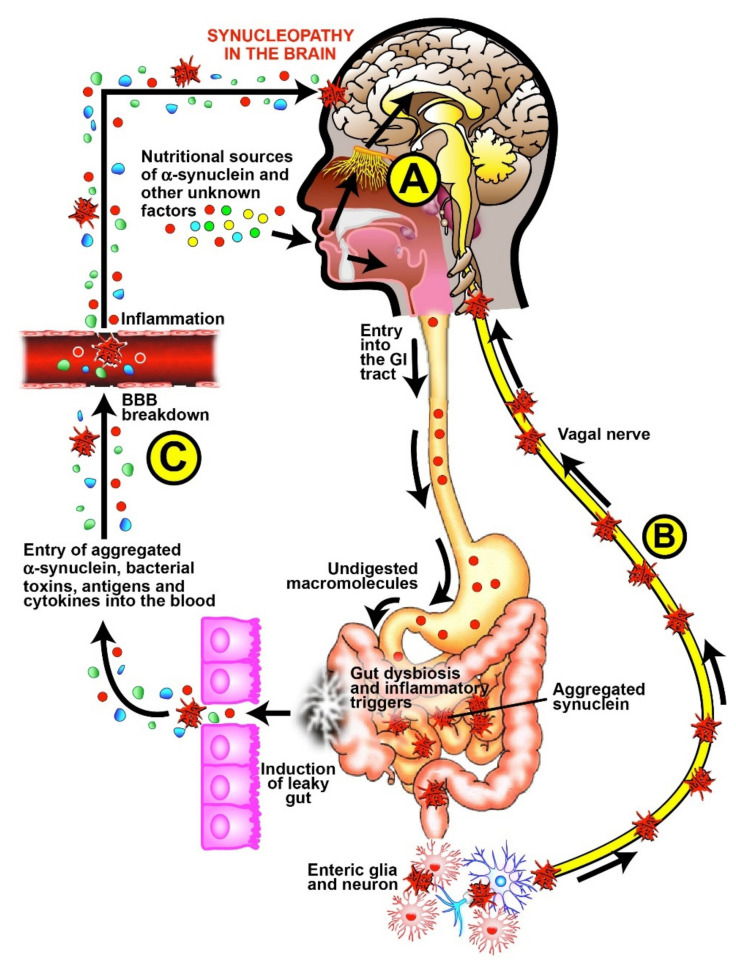Figure 7.
The triple-hit hypothesis of alpha-synucleopathy in the gut-brain axes of patients with Parkinson’s disease. Nutritional sources of aSN or cross-reactive nutritional peptides enter in the oral cavity. After chewing, some of those transformed substances may penetrate through the olfactory bud in the nasal cavity into the brain (A). The nutritional factors proceed from the oral cavity into the stomach and intestine. If improperly digested or modified, those nutritional substances may induce gut dysbiosis, enhance the production of inflammatory triggers and amyloidogenesis resulting in the aggregation of aSN. The aggregated aSN activates enterocytes/enteroendocrine/subepithelial dendritic cells, in close contact with the enteric glia cells and through the neurons, uptake the aSN aggregates and deliver them to the brain via the vagal nerve (B). The inflammatory mediators trigger leaky gut and enhance the entry of aggregated aSN and other macromolecules into the circulation, igniting further inflammation in the blood. Those molecules together induce breakdowns in the BBB, followed by the entry of the aggregated aSN and other molecules into the brain (C). Thus, the entry of aggregated aSN via the olfactory bulb, the enteric nerve, or broken gut and blood-brain barriers can result in synucleopathy and the formation of Lewy bodies in Parkinson’s disease.

